
The Elder Scrolls IV: Oblivion is an open-world action role-playing video game developed by Bethesda Game Studios, and co-published by Bethesda Softworks and 2K Games. It is the fourth installment in The Elder Scrolls series, following 2002's The Elder Scrolls III: Morrowind, and was released for Microsoft Windows and Xbox 360 in 2006, followed by PlayStation 3 in 2007. Taking place within the fictional province of Cyrodiil, the game's main story focuses on the player character's efforts to thwart a fanatical cult known as the Mythic Dawn that plans to open portal gates to a demonic realm known as Oblivion.
Halo is a military science fiction media franchise, originally created and developed by Bungie and currently managed and developed by 343 Industries, part of Microsoft's Xbox Game Studios. The series launched in 2001 with the first-person shooter video game Halo: Combat Evolved and its tie-in novel, The Fall of Reach. The latest main game, Halo Infinite, was released in late 2021 as a free to play beta, and then had the campaign release later that year.
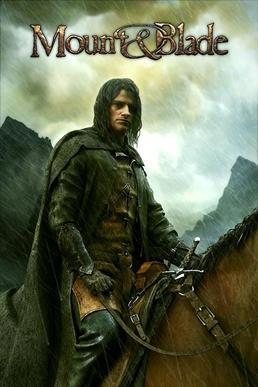
Mount & Blade is a 2008 medieval strategy action role-playing game for Microsoft Windows, developed by Turkish company TaleWorlds Entertainment, and published by Swedish company Paradox Interactive. In the game, the player controls a customized character to battle, trade, and manage a fief in the medieval land of Calradia. The game was developed by Armağan Yavuz and his wife İpek Yavuz, the founders of TaleWorlds Entertainment. The game was fully released on September 16, 2008, though alpha versions of the game were available prior to the full release.

Test Drive Unlimited is a 2006 racing video game developed by Eden Games and published by Atari for Xbox 360 and Microsoft Windows. Atari Melbourne House developed the PlayStation 2 and PlayStation Portable versions. Being the eighteenth entry in the Test Drive series, Unlimited serves as a reboot of the franchise, discarding the continuity of the previous games. The game features over 125 licensed sports cars and motorcycles and the terrain is modeled after the Hawaiian island of Oʻahu that features over 1,000 miles (1,600 km) of roads and highways.

Victoria II is a grand strategy game developed by the Swedish game company Paradox Development Studio and published by Paradox Interactive. It was announced on August 19, 2009, and released on August 13, 2010. It is a sequel to Victoria: An Empire Under the Sun.

Arma 2: Operation Arrowhead is a standalone expansion pack to Bohemia Interactive's tactical shooter Arma 2. Arma 2: Operation Arrowhead includes three new multiplayer maps, new vehicles and equipment, new factions, along with a new campaign.

Lead and Gold: Gangs of the Wild West is a team-based third-person shooter multiplayer video game. It was developed by Fatshark and published by Paradox Interactive and released in 2010 for Microsoft Windows via Steam and the PlayStation 3 via the PlayStation Network. An Xbox Live Arcade version was announced, but it was cancelled.

Deus Ex is a series of role-playing video games, set during the mid 21st century. Focusing on the conflict between secretive factions who wish to control the world by proxy, and the effects of transhumanistic attitudes and technologies in a dystopian near-future setting, the series also includes references to real-world conspiracy theories, historical mythologies and philosophies, and provides a commentary on capitalist values and division in society. The first two games in the series were developed by Ion Storm, and subsequent entries were developed by Eidos-Montréal, following Ion Storm's closure. The Ion Storm games were published by Eidos Interactive, and all Eidos-Montréal media was published by Square Enix until 2022, when ownership was sold to Embracer Group.

Magicka is an action-adventure game developed by Arrowhead Game Studios. It was released via Steam for Microsoft Windows on January 25, 2011.

Minecraft is a 2011 sandbox game developed by Mojang Studios and originally released in 2009. The game was created by Markus "Notch" Persson in the Java programming language. Following several early private testing versions, it was first made public in May 2009 before being fully released on November 18, 2011, with Notch stepping down and Jens "Jeb" Bergensten taking over development. Minecraft has become the best-selling video game in history, with over 300 million copies sold and nearly 140 million monthly active players as of 2023. It has been ported to several platforms.
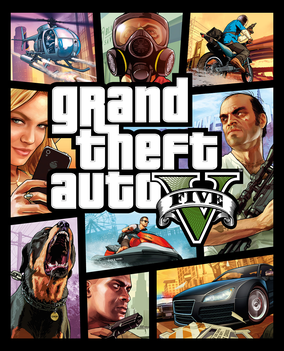
Grand Theft Auto V is a 2013 action-adventure game developed by Rockstar North and published by Rockstar Games. It is the seventh main entry in the Grand Theft Auto series, following 2008's Grand Theft Auto IV, and the fifteenth instalment overall. Set within the fictional state of San Andreas, based on Southern California, the single-player story follows three protagonists—retired bank robber Michael De Santa, street gangster Franklin Clinton, and drug dealer and gunrunner Trevor Philips, and their attempts to commit heists while under pressure from a corrupt government agency and powerful criminals. Players freely roam San Andreas's open world countryside and fictional city of Los Santos, based on Los Angeles.
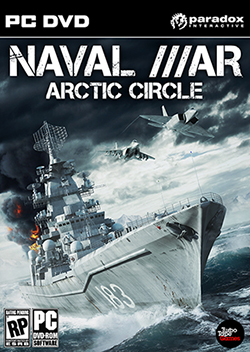
Naval War: Arctic Circle is a real time naval strategy game developed by Norwegian development company Turbo Tape Games and published by Swedish video game publisher Paradox Interactive. It was released on April 10, 2012. Naval War: Arctic Circle was announced at the 2011 Paradox Interactive Convention held in New York. The game is supported by the Norwegian Film Institute, Innovation Norway and the Norwegian Research Council, and is developed in close consultation with the Royal Norwegian Navy.

War of the Roses is an action hack and slash video game developed by Fatshark and released by Paradox Interactive. The game is set during the Wars of the Roses which took place in England during the 15th century. It was released on 2 October 2012. War of the Roses was well received for its extensive customisation enabling character configurations to be tailored to very specific tastes and for its original "control scheme to tackle a new kind of combat with the aim of creating a completely different experience". The game shut down on 28 February 2017.

Prison Architect is a private prison construction and management simulation video game developed and published by Introversion Software. It was made available as a crowdfunded paid alpha pre-order on September 25, 2012 with updates that were scheduled every three to four weeks until 2023. With over 2,000,000 copies sold, Prison Architect made over US$10.7 million in pre-order sales for the alpha version. Prison Architect was an entrant in the 2012 Independent Games Festival. The game was available on Steam's Early Access program, and was officially released on October 6, 2015.

Europa Universalis IV is a 2013 grand strategy video game in the Europa Universalis series, developed by Paradox Development Studio and published by Paradox Interactive as a sequel to Europa Universalis III (2007). The game was released on 13 August 2013. It is a strategy game where players can control a nation from the Late Middle Ages following the Battle of Varna (1444), the final crusade, to the Napoleonic era with the timeline finishing on 2 January 1821 to coincide with the death of Napoleon on 5 May 1821. The player navigates their nation with conducting trade, administration, diplomacy, colonization, and warfare.
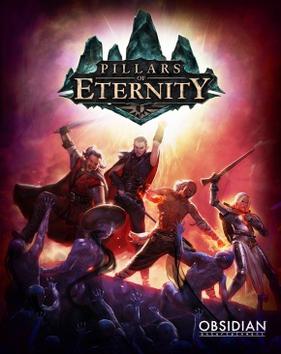
Pillars of Eternity is a role-playing video game developed by Obsidian Entertainment and published by Paradox Interactive. It was released for Microsoft Windows, OS X, and Linux on March 26, 2015. The game is a spiritual successor to the Baldur's Gate and Icewind Dale series, along with Planescape: Torment. Obsidian started a crowdfunding campaign on Kickstarter for it in September 2012. The campaign raised over US$4 million, which was the highest funded video game at the time. The game uses the Unity engine.

March of the Eagles is a grand strategy video game developed by Paradox Interactive and released on 19 February 2013. The game centres on the time period of 1805–1820. It started life as a sequel to AGEOD's Napoleon's Campaigns, and was originally titled Napoleon's Campaigns II. As AGEOD was bought by Paradox, they developed and retitled the game. Virtual Programming released a Mac OS X version of the game on 9 May 2013.
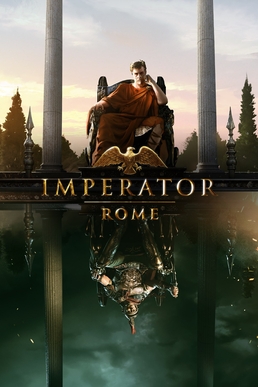
Imperator: Rome is a 2019 grand strategy wargame developed by Paradox Development Studio and published by Paradox Interactive. It is a spiritual successor to Europa Universalis: Rome (2008). It received generally positive reviews from critics, however development and support for the game was suspended by May 2021.

Crusader Kings III is a grand strategy role-playing video game set in the Middle Ages, developed by Paradox Development Studio and published by Paradox Interactive as a sequel to Crusader Kings (2004) and Crusader Kings II (2012). The game was released on PC on 1 September 2020 and on the Xbox Series X/S and PlayStation 5 on 29 March 2022.
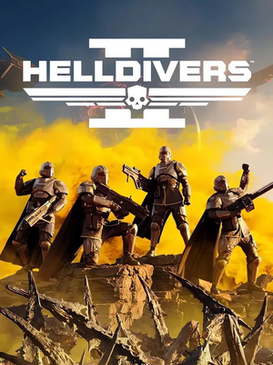
Helldivers 2 is a 2024 cooperative third-person shooter game developed by Arrowhead Game Studios and published by Sony Interactive Entertainment. The game is the direct sequel to Helldivers, a 2015 top-down shooter. It was released for PlayStation 5 and Windows on 8 February 2024. It received positive reviews from critics and sold over 1 million units within the first month of its release.



















